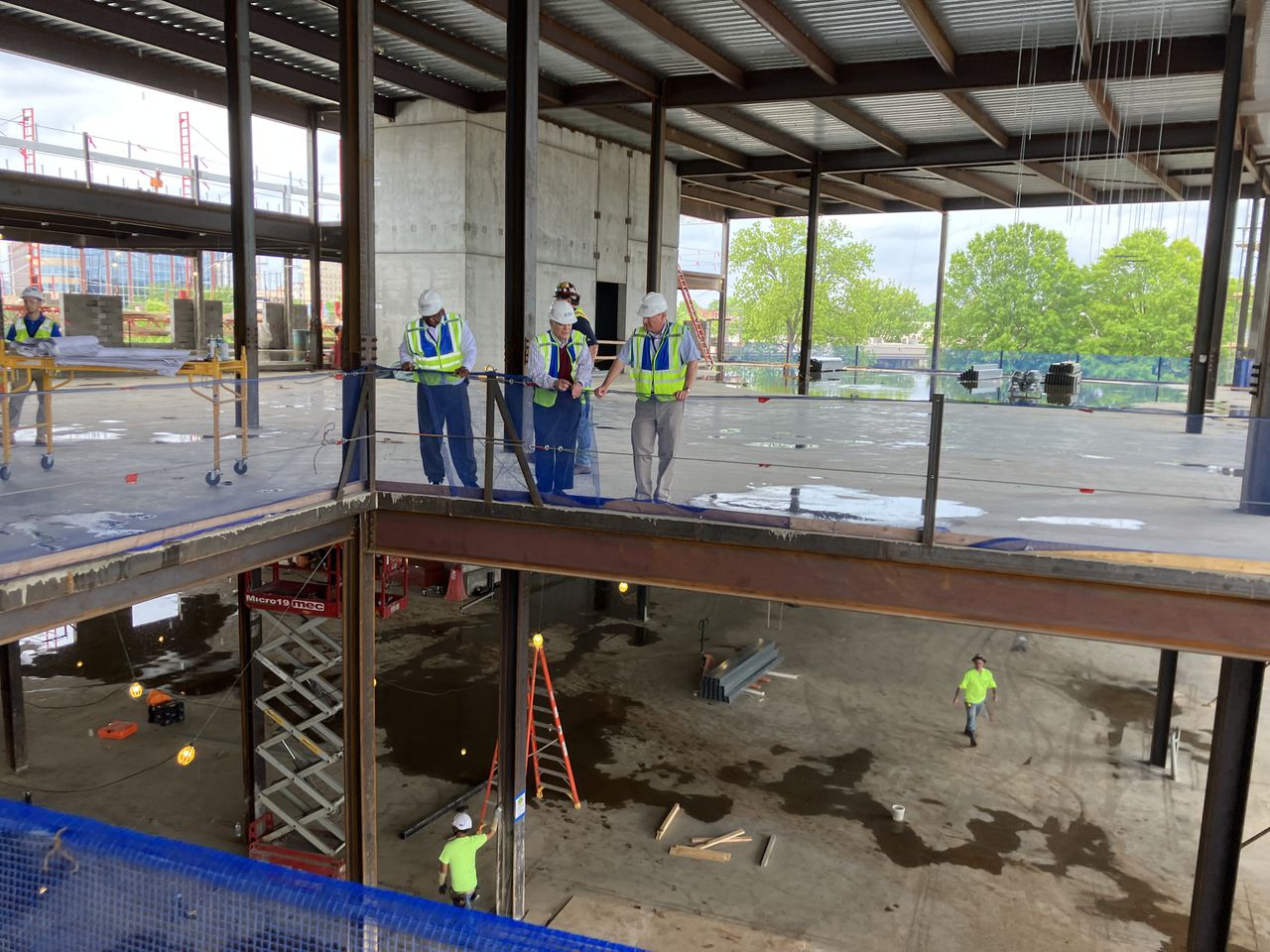New Huntsville federal courthouse is being built to last
The new federal courthouse rising on a downtown Huntsville hill is designed to be modern inside, classic outside, and secure but open to the public.
Above all, say those in the building process, it is being built to last.
“We say these are 100-year buildings,” Brasfield & Gorrie construction manager Aaron Rader said this week on a tour of the courthouse progress. “We’re not building this for 30 years. We’re building this for 100 years of growth in Huntsville.”
The courthouse will open in the fourth quarter of 2024 at the corner of Lowe Avenue and Gallatin Street. Its steel skeleton is up, and Rader said he’s “not facing any particular challenges the general construction industry isn’t (facing) now … supply chain shortages, material, shortages of skilled tradesmen.”
Curving outer walls of glass and limestone will soon cover those steel frames. A robot has already painted office spaces on the now vacant concrete floors following designs by the building’s architects. The floor plans include secure, private passages to move criminal defendants safely to and from courtrooms with no contact with others in the building.
Radar said his goal is, “Account for the curvature of the building and maximize the space. It creates some interesting construction opportunities.”
The design is intentionally reminiscent of federal buildings in Washington, D.C. In that way, it follows the same theme as the existing federal courthouse in Tuscaloosa.
Inside the front door will be “a big public lobby” with security screening ahead for those passing into the building’s business areas.
“A federal courthouse does house multiple government agencies,” said District Judge Liles Burke. “There are some other ones I won’t name, but your main tenants will be from Northern District of Alabama. So, you have the courts, bankruptcy (administrator, clerk), U.S probation, U.S. clerks and U.S. Marshall Service.”
Above that lobby will hang a historic 1936 mural by artist Xavier Gonzales showing five people symbolizing Alabama’s population at the time. The mural will be slowly peeled from its position on a wall in the current courthouse by a special conservation crew, taken to Washington, D.C., for restoration and reinforcement, applied to a new medium and moved to the new courthouse later in the construction, said Senior Judge Lynwood Smith.
Three federal judges assigned to Huntsville – Burke, Smith and Magistrate Judge Herman N. Johnson, Jr. – joined the tour. They say they are happy with the design and the progress. “Lynwood and I are pinching ourselves,” Burke said, “considering what we’re in now.”
That’s a reference to the district’s much smaller 1930′s-era federal courthouse at the corner of Jefferson Street and Holmes Avenue. At nearly 100 years old, that building is historic but not built to handle today’s technology and staffing among other challenges.
The new courthouse is designed for modern technology but also for its site and the specific needs of its residents and the area, Radar said. It will be built for security, as well, including outside bollards – short posts planted in the ground to stop vehicles from getting too close.
“Inside, the finishings can vary but the buildouts (on modern federal courthouses) are very much the same as far as security requirements, what spaces are in them, those kinds of things,” Radar said. “That’s where we’re able to leverage our experience to really be masters in the construction of these federal courthouses.”
The ground floor is mainly for bankruptcy court and probation offices. Second floor is courtrooms and judges’ chambers, and the third floor will be United States Marshalls and district clerks, Burke said. There will be other federal tenants not publicly identified.
Extensive geotechnical research was done of the hill before construction started, Radar said, and none of the caves found elsewhere in town were located under the site.
Workers did find a 20,000-gallon underground storage tank built in the 1930s or ‘40s. “Potentially an old gas station,” Radar said. “We had to work with the state to remove the tank, do soil testing and dispose of everything properly.”
